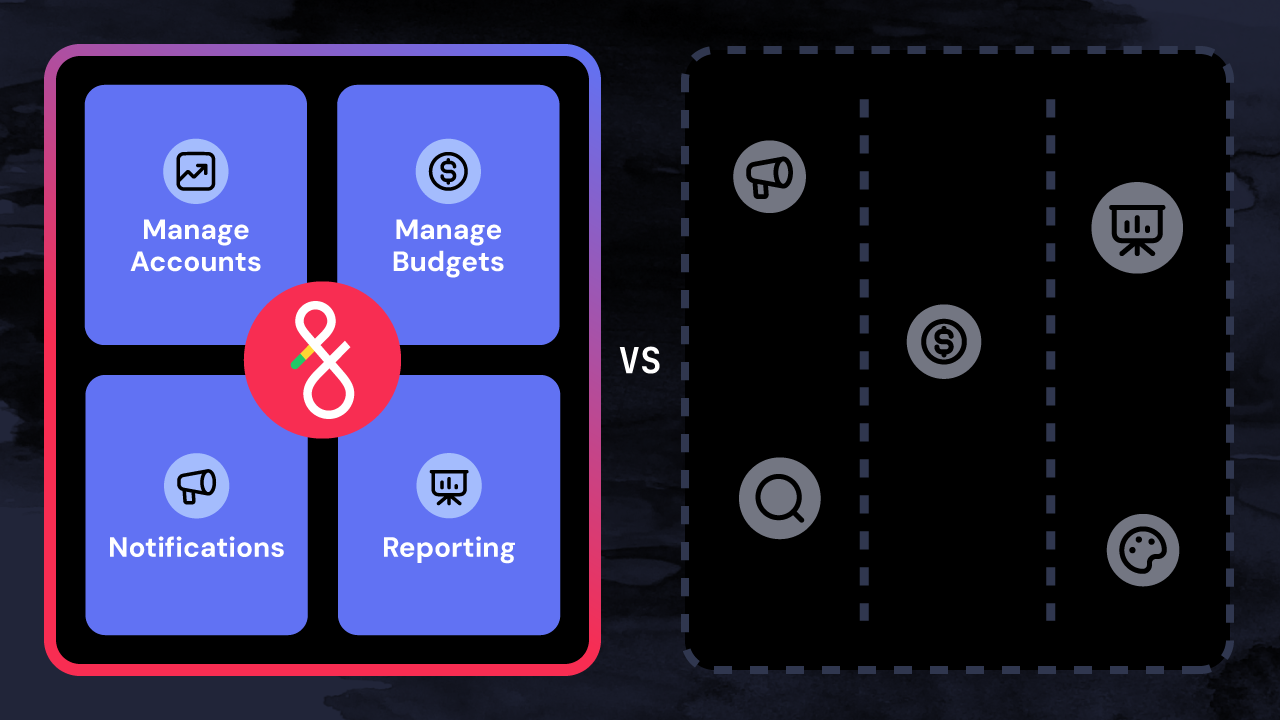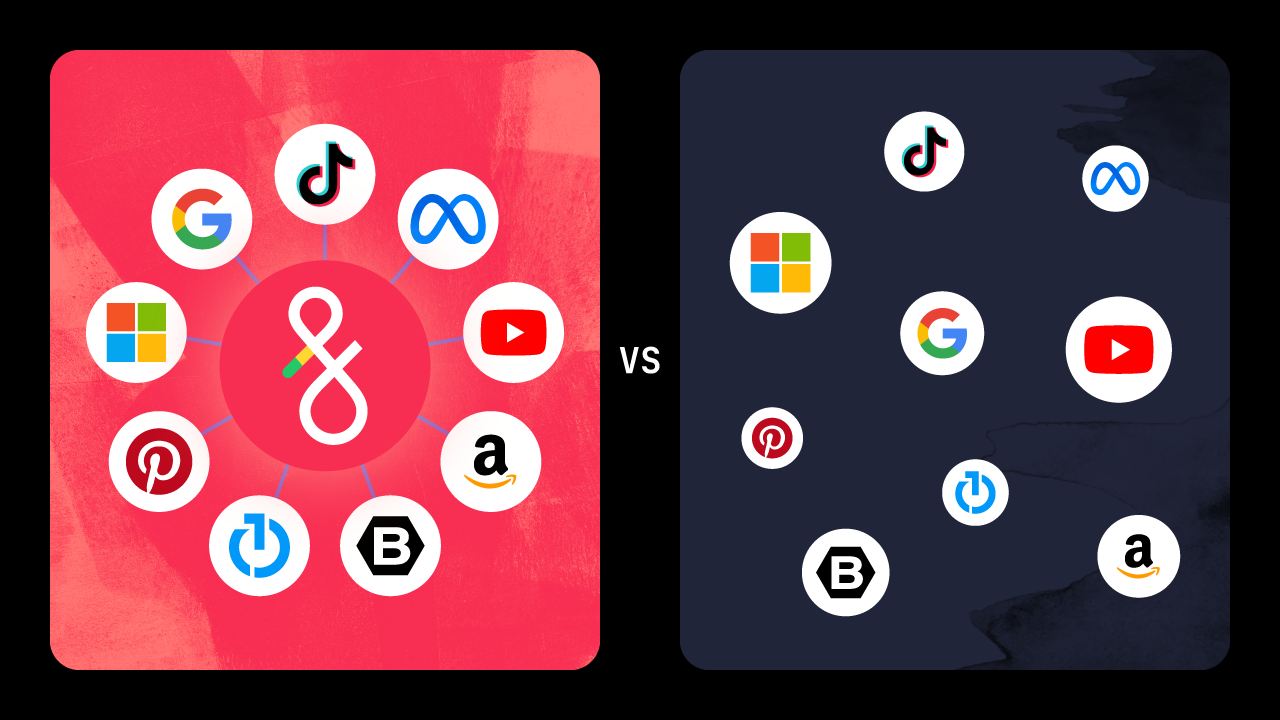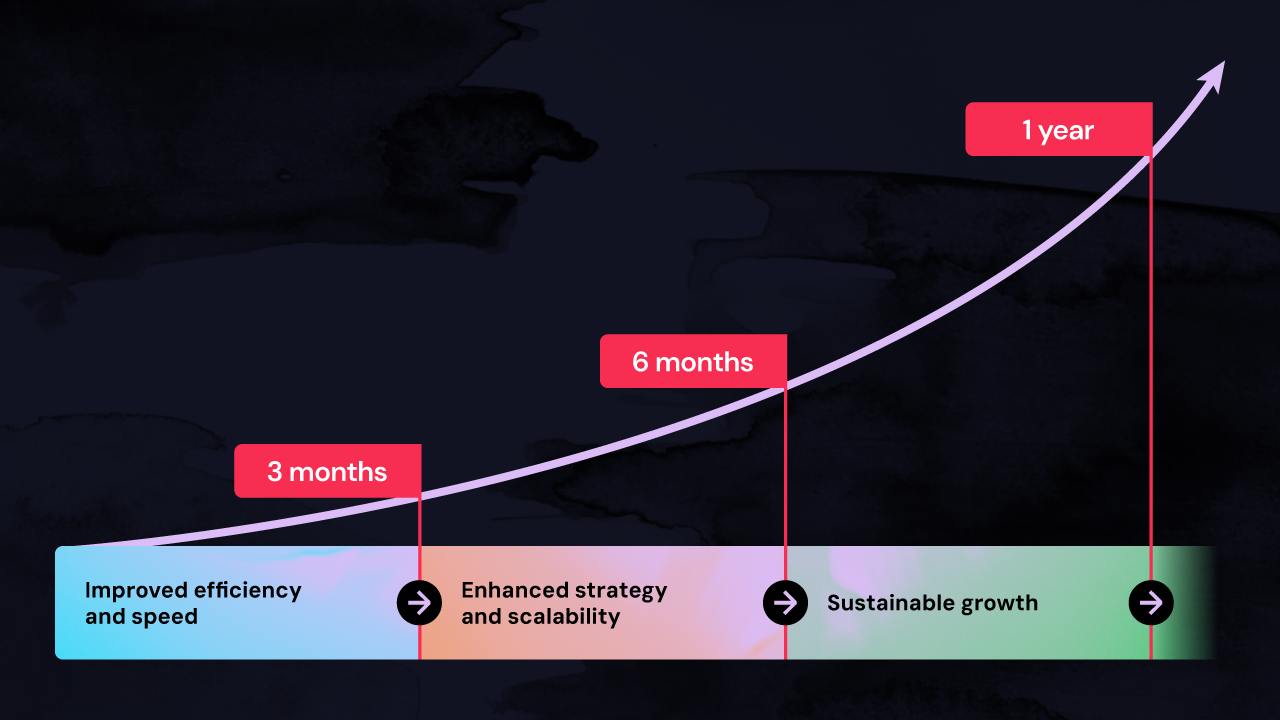Many agencies today are grappling with a range of challenges we hear often: diminishing profit margins, and the struggle to implement changes that could significantly boost profitability. As a former agency leader, I know how these issues tend to compound, making it difficult to achieve sustainable, profitable growth at scale.
The traditional operational model most agencies follow often involves a heavy reliance on manual processes for project management, client reporting, and internal operations. This increases operational costs and limits the agency's ability to respond quickly to market changes or client needs. There’s a silver lining in the form of automation technology, which is redefining the future of agency operations and business models.
Automation not only significantly enhances the efficiency and productivity of your business but also has the potential to fundamentally reshape the structure of your operations. In this article we'll explore ways in which agency leaders can restructure their operations to experience sustained, long-term efficiencies and overall business resilience.
Reorganizing operations for scalability and profit
By reimagining operational models as well as org design, agencies can harness their advertising technologies to not only scale efficiently but also enhance profitability. This approach promises a dual benefit: it streamlines organizational processes, consequently reducing overhead costs, and fosters a more engaged, strategically focused workforce.
The implementation of technology in routine tasks enables employees to dedicate more time to strategic initiatives, therefore reducing churn by increasing job satisfaction. In essence, the future lies in rethinking current practices to create a more sustainable, efficient, and satisfying work environment. Imagine a streamlined agency structure where your team harnesses the power of automation for routine tasks including manual optimizations, campaign building, and compiling reporting and analysis. The time saved can then be strategically redirected towards efforts such as client insights and QBRs, campaign testing and optimization, strategic planning and other key activities that directly enhance client satisfaction and retention.
Additionally, with automation taking over the mundane tasks, the roles within the agency can evolve. Here at Fluency, we’ve seen these time-savings translate to:
- 90% less time spent on account launches
- 97% less time spent on day-to-day budget management
- 71% less time implementing changes across critical campaigns
With these time savings, teams are now focusing on higher-value activities, such as client strategy and creative development, rather than getting bogged down by administrative duties. This not only enhances job satisfaction but also enables you to offer more in-depth and sophisticated services—thereby attracting and retaining clients who are looking for a more impactful partnership. This not only enhances job satisfaction but also enables you to offer more in-depth and sophisticated services—thereby attracting and retaining clients who are looking for a more impactful partnership. This was the case for one of our key partners Dealer.com. Learn more about how automation was able to transform how their advertising strategists serviced clients below:
Exploring strategic roles for enhanced organizational impact
For many of our partners, automation's allure lies in its ability to streamline workflows, boosting profitability and competitive edge. This often involves a strategic overhaul focused on scalability and profit, possibly reorganizing operations and teams to leverage automation effectively. Such a shift can lead to substantial savings by cutting down the need for repetitive manual tasks, thus freeing up essential time and resources.
A crucial question for agencies is how to reallocate saved time from manual tasks to benefit the team further. By doing this, agencies can focus on strategic initiatives, improve client interactions, and explore ways to reduce overhead and optimize team roles. Once automation is in place, the next step is to consider organizational restructuring to drive sustained efficiency and team development over time. Here are three key ways automation can impact your organizational structure as you plan ahead:
- Account consolidation and improved staff/account ratios: Automation allows for the integration of various account management tasks into a unified system. This method reduces redundancy and improves efficiency by centralizing data and processes, leading to better resource management and decision-making. With these advancements, the same staff can now effectively manage more accounts, reducing the need for significant headcount growth in your staffing plans. This improved staff-to-account ratio translates to cost savings and enhanced overall productivity without compromising the quality of service. At Fluency, typical ratios can improve by 3-5X.
- Strategic roles that build operational strength and resilience - the Advertising Architect: Creating strategic operational roles that harness and leverage your technologies is essential for scaling and future-proofing your operations. The advent of automation creates new opportunities for specialized roles like an Advertising Architect. By integrating such specialized positions, companies can better navigate the complexities of modern technologies, ultimately improving efficiency and fostering innovation.
- Unifying and consolidating specialized functions to create improved efficiency and client strategy: Consolidating roles can eliminate workflow "silos," creates holistic campaign management under a unified strategy, and allows strategists to broaden their overall skillset. Leveraging automation plays a critical role in this consolidation process. By utilizing advanced automation tools, repetitive and manual tasks can be streamlined, thus freeing up strategists to focus on more strategic initiatives. This not only enhances efficiency but also ensures a more cohesive approach to campaign management, where cross-channel insights can be seamlessly integrated and executed. For instance, individual teams dedicated search and social media management can be consolidated into one dedicated, multichannel function.
Enhancing efficiency and decision-making through account consolidation and enhanced staff-to-account ratios
Automation enables the seamless integration of various account management tasks into a unified system, significantly improving operational efficiency. By centralizing data and processes, redundant tasks are minimized, leading to streamlined workflows and better resource management. This centralization also ensures that data is easily accessible and consistently up-to-date, which enhances decision-making capabilities. With automation handling repetitive and time-consuming tasks, account managers can focus more on strategic activities, ultimately resulting in more effective account management.
The advancements in automation has also made it possible for your existing staff to manage a larger number of accounts without experiencing burnout or a decline in the service they provide. This improved staff-to-account ratio means that companies can scale their operations without the need for proportional increases in staffing, thereby achieving cost savings. Enhanced productivity coupled with superior data insights ultimately empowers your team to deliver high-quality service consistently, without the overwhelm. Consequently, you can maintain high standards of service while reaching new heights in efficiency and client satisfaction.
Building operational strength and resilience with the Advertising Architect
Creating strategic operational roles that harness and leverage your technologies is essential for scaling and future-proofing your operations. The advent of automation creates new opportunities for an emerging role: the Advertising Architect. Imagine reallocating the tasks of your highly skilled but underutilized team members to a single, equally dedicated and uniquely specialized individual such as the “Advertising Architect.” This role revolves around controlling automation software, which not only enables the scaling of your efforts in various dimensions but also frees up your other team members to excel in their areas of expertise. Key responsibilities of this role, include:
- Engage in pre-sale scoping calls to identify any unique or custom technical requirements with prospects.
- Document prospect goals for adopting an automation platform, like Fluency, and help prioritize solutions to achieve them as they transition to clients.
- Validate data types and establish connections for the platform's use.
- Perform technical implementation with clients, including account creation.
In today's rapidly evolving digital landscape, the concept of an "Ad Architect" could become a game-changer for digital advertising companies. This innovative role goes beyond traditional advertising techniques to build and manage dynamic ad campaigns that are data-driven, highly optimized, and tailored to the unique needs of each business. The Ad Architect leverages cutting-edge technology, deep understanding of digital platforms, and creative strategy to construct campaigns that not only capture attention but also drive substantial ROI. This approach represents the future of digital advertising, where precision, personalization, and performance converge to redefine how companies connect with their audience, making the Ad Architect an indispensable asset for today’s agencies. This is, of course, just one example of how automation can reimagine your operations for efficiency and scale.
Putting it all together: How real-life agencies have unified and consolidating specialized functions
In addition to account consolidation and the creation of a dedicated role, consolidating roles can lead to scalable success and team realignment. If you’re wondering what scalable success and team realignment could look like with consolidating roles, just take it from one of our partners, Agency FIFTY3. Agency FIFTY3 is a leading marketing agency with a core focus on the real estate industry who embarked on a mission to streamline operations, consolidate roles, and focus on a strategic, client-centric approach.
To tackle its operational challenges, Agency FIFTY3 partnered with Fluency aiming for a streamlined approach in its paid media operations. This was achieved by consolidating tasks and roles, and harnessing automation for efficiency. The agency's shift to a single-platform strategy via Fluency enabled a strategic focus, permitting team members to fine-tune campaigns and utilize tools to align with client objectives effectively.
Adopting a product owner methodology, like the Advertising Architect, fostered a client-centric ethos. With Fluency's support, Agency FIFTY3 enhanced its team's marketing acumen and KPI awareness, which led to more integrated marketing efforts. Managers were also empowered to oversee client portfolios more adeptly and share insights, encouraging a culture of collective growth. Operational efficiencies were realized promptly; the coordination burden lessened as fewer specialists were needed for discussions, and ad budget management was streamlined, reducing complexity and improving overall campaign synergy.
This operational alignment translated into some pretty powerful numbers. By partnering with Fluency, Agency FIFTY3 also saw a: 54% increase in analyst capacity to manage critical workflows, 43% growth in average spend managed per analyst and 75% reduction in the time required to launch accounts. This partnership exemplifies the power of thoughtful automation and strategic transformation in driving not just operational efficiency, but also in fostering a deeper engagement with clients.
The team at Fluency can help you re-imagine your organization with automation
By reimagining the agency structure and operations to leverage automation, agencies can tackle traditional challenges head-on. Reducing overhead and reinvesting the time saved into strategic initiatives and team development can transform the way agencies serve their clients, ultimately leading to higher profit margins, reduced churn, and a stronger, more competitive position in the marketplace. If you’re looking for support on not just automation, but a streamlined realignment of your team, we would love to discuss how we can partner with you.






